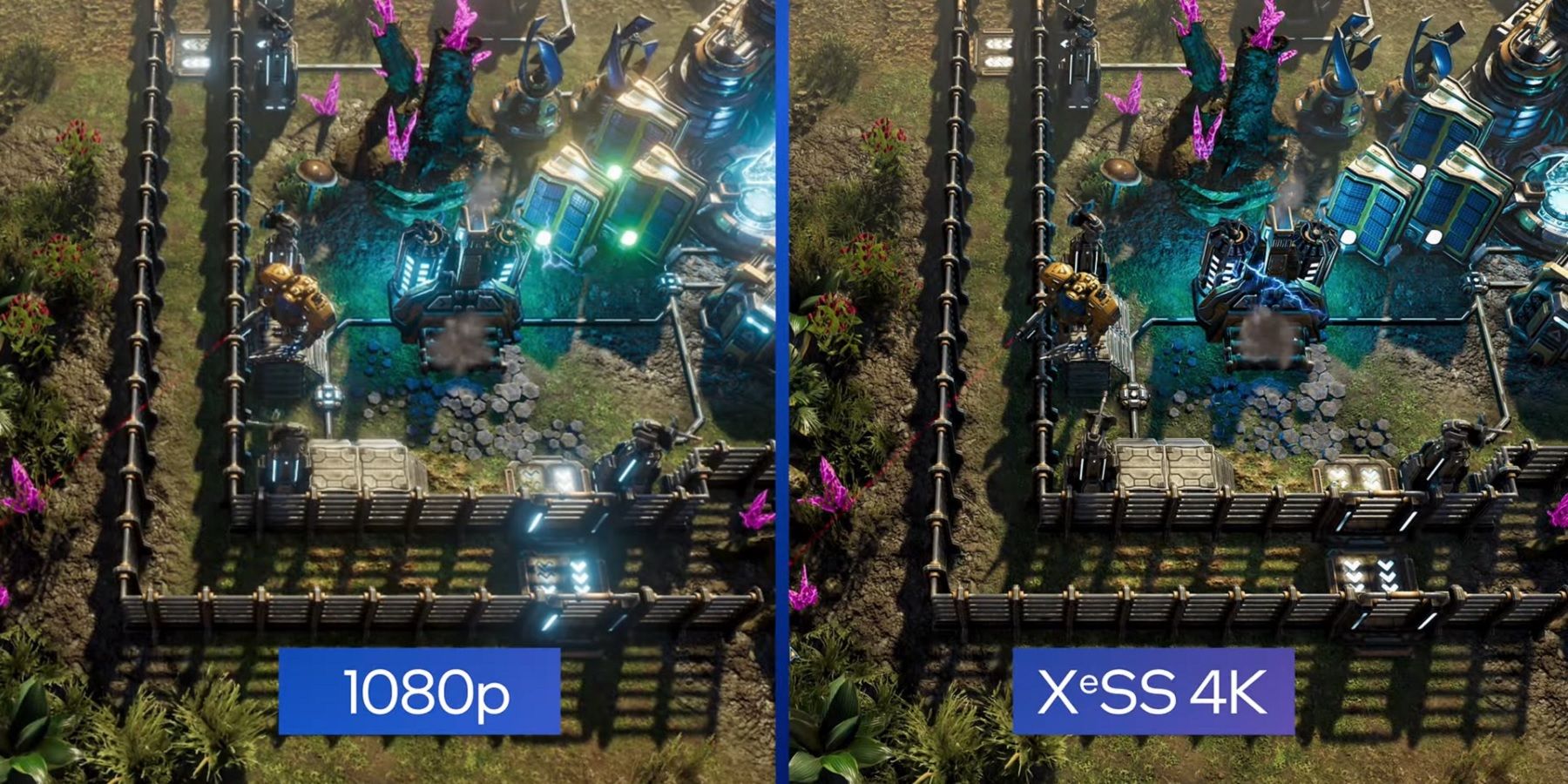Currently, AMD and Nvidia are the two front-runners in the world of graphics card technology, though some may argue that the latter is leading the charge. However, a third option is about to become available as Intel is due to release its own line of GPUs, starting next year. When the CPU giant announced it would be making its Arc graphics cards, there was something of a buzz around this development, with many wondering how well the company could fare against the other two experienced conglomerates. One of Intel's big selling points for its upcoming hardware is its own upscaling technology, which it has been showing off recently.
In a video uploaded to YouTube a few days ago, Intel demonstrated its XeSS, or Xe Super Sampling, algorithm in the survival base-building game The Riftbreaker. Lasting just over a minute, the clip shows the game in split-screen, with a 1080p version of it on the left, and the 4K upscaled version on the right. The narrator points out that the view on the right is much sharper, with greater clarity, while the one of the left appears somewhat more blurry, especially when it's zoomed in.
This seems to be something that Intel is interested in pushing as upscaling in modern video games is something that the likes of Nvidia and AMD are becoming more and more involved with. Image upscaling, be it XeSS or its rival's equivalent, essentially works by redrawing pixels on-screen, making it comparable to a higher resolution as though it was running said resolution natively. It's understandable, therefore, that Intel would be keen to demonstrate its own version, given that the other two companies have had a bit of a head start, especially Nvidia who's DLSS, or Deep Learning Super Sampling, has been available for a couple of years now.
This is also not the first time Intel has shown off this technology, either. Recently, XeSS was also demonstrated in a segment of Hitman 3, again showing that the non-upscaled screen on the left is less detailed than the 4K one on the right. Both videos do show how impressive this technology has the potential to be, though it will likely only become more apparent once it's actually out.
With Nvidia's DLSS coming to more PC games, and AMD offering its FSR, or FidelityFX Super Resolution, as open-source, there's quite a bit of competition for Intel to come into. Whether its Arc GPUs, along with XeSS, will bring the company into the fore and make it a worthy combatant in the graphics card ring remains to be seen at this stage.

